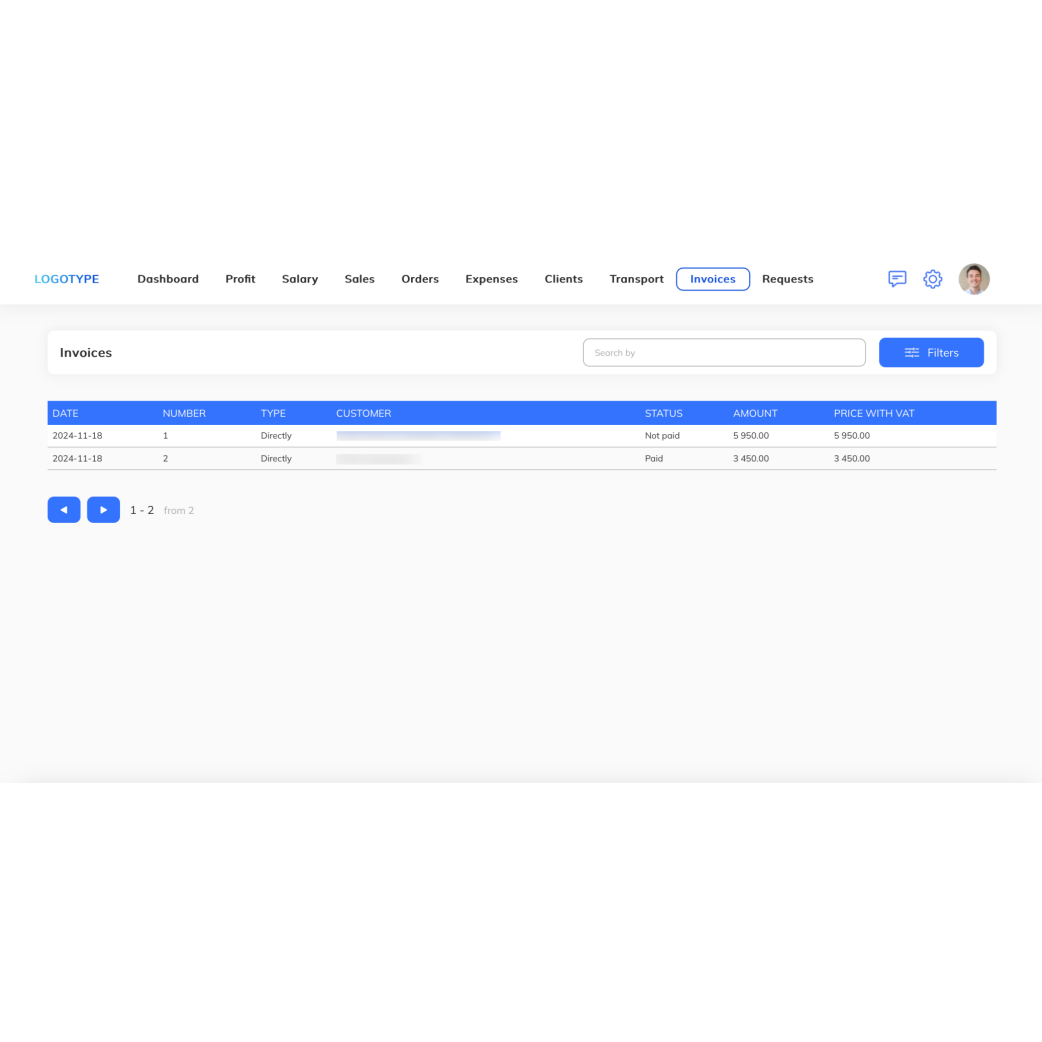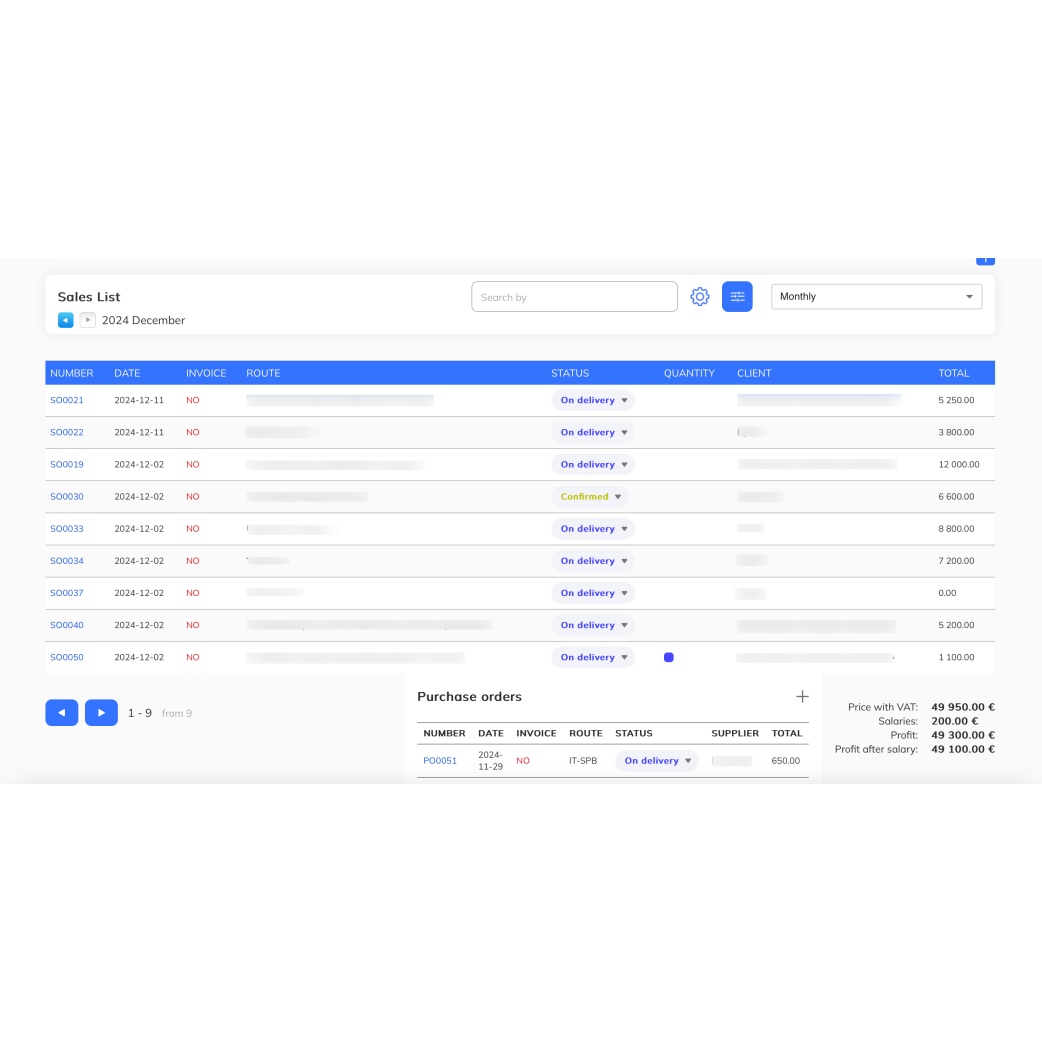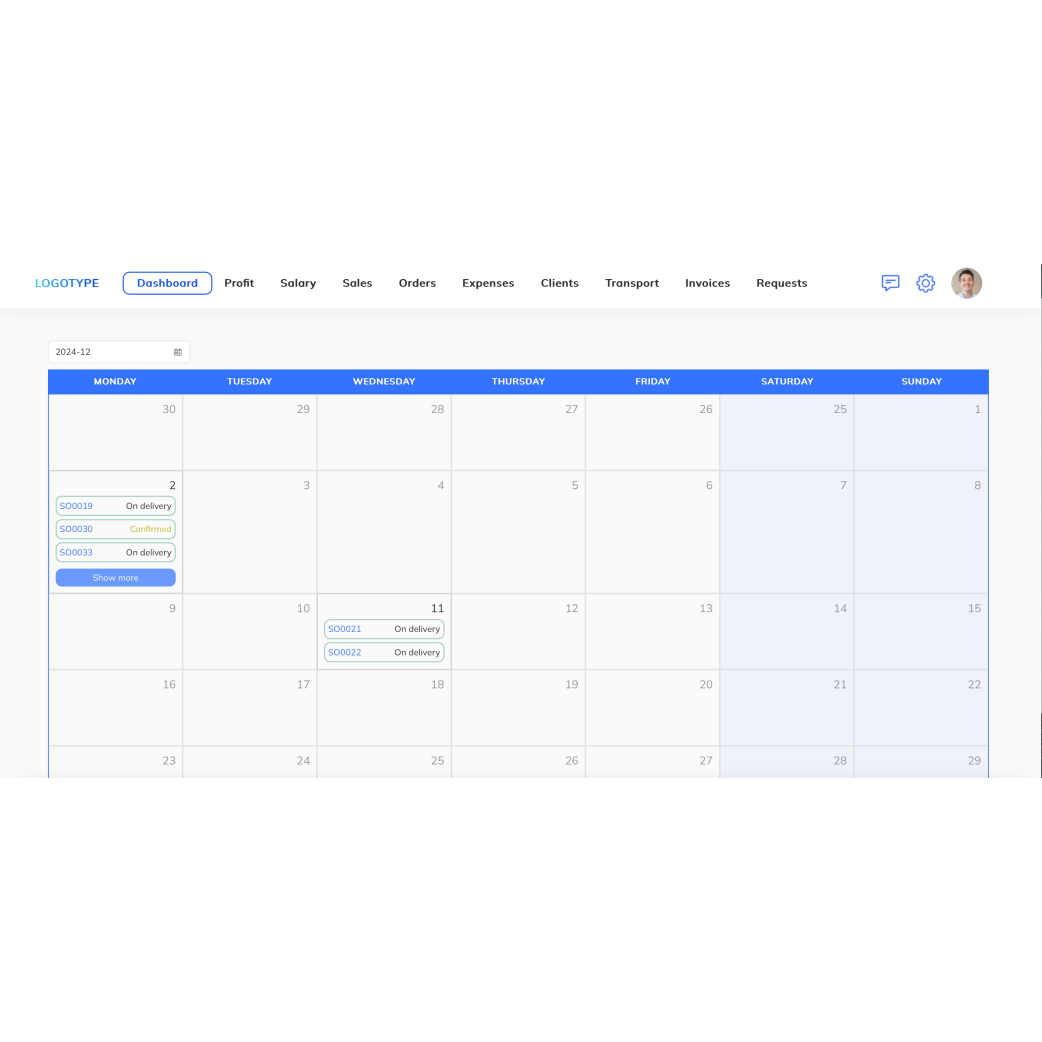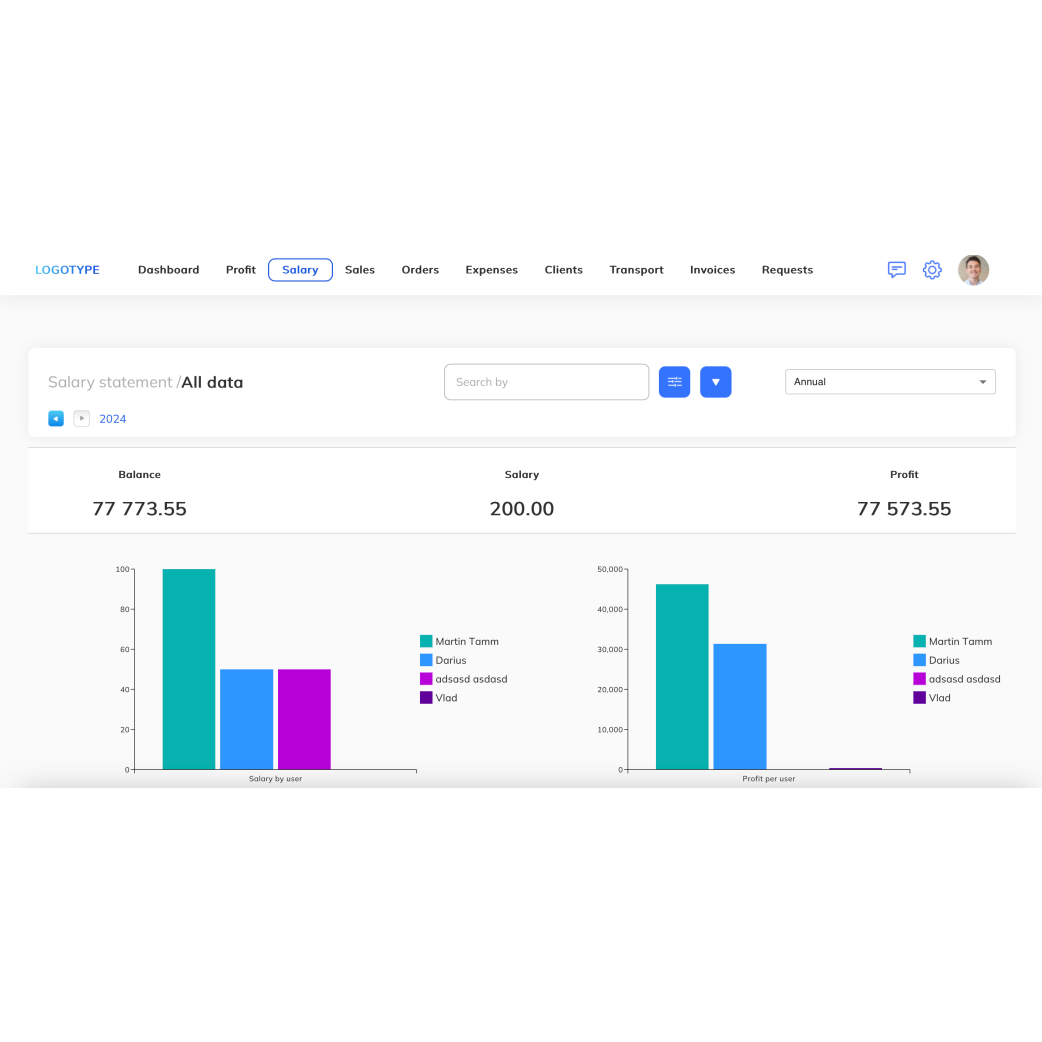- Development
- Landing page/business card website development
- Corporate website development
- Online store web development
- Website development for law firms
- Website development for logistics companies
- Website development for B2B
- Website development for startups
- App development
- ERP/CRM system development
- Web 3 project development
- Complex promotion
- Projects
- Consulting
- Blog
- Contacts
- Development
- Landing page/business card website development
- Online store web development
- Corporate website development
- Website development for logistics companies
- Website development for law firms
- Website development for B2B
- Website development for startups
- Web 3 project development
- ERP/CRM system development
- App development
- Complex promotion
- Projects
- Consulting
- Blog
- Contacts
CRM SYSTEM BUSINESS PROCESS AUTOMATION
CRM/ERP system development
We save time and increase the productivity of your company.




What problems CRM systems solve?
A CRM system is a tool designed to streamline client management. It stores information about existing and potential customers from multiple sources and helps optimize processes across sales, marketing, and customer service departments.
CRM keeps a history of interactions with each client and helps managers make timely offers and provide personalized service.
The system accumulates information about the target audience, helps to better understand customer needs and set up targeted advertising campaigns based on accurate data.
The CRM system automates the processing of orders and the preparation of proposals. Sales managers will sell, not fill out forms or search for documents.
Improves collaboration between departments and monitors how employees perform on key indicators. The system will help you transfer the team to a remote location without losing productivity.
Each module of the CRM system is aimed at increasing profits by attracting new customers, increasing conversion and receipt depth, increasing retention and LTV – the customer’s lifetime value.
Professional
CRM/ERP- User-friendly interface
- Work with high loads with the selected CRM at will
- Business processes
- Integration of new functionality of the selected CRM at will
- Service life of the selected CRM according to your request
- Limited functionality of the selected CRM at will
- Reports
Individual
CRM/ERP- The interface is being designed
- Scalability and speed of work are laid down at the construction stage
- The system takes into account all the subtleties of the PSU
- Any integrations to the required extent
- The system is completely yours. Being upgraded
- The necessary functionality is added at your request
- Any analytics service
Basic
CRM/ERP- Minor improvements are possible
- Speed of work - a given that you should accept
- Only typical PSUs
- Select from the list provided by the CRM manufacturer
- It can be withdrawn from service at any time
- The decision to extend the functionality is made only by the manufacturer
- Standard reports only
Which companies are implementing unique CRM systems?
By implementing CRM, the company increases productivity and increases customer loyalty
Real estate agencies
- Managing the database of real estate objects, importing listings, processing applications
Online stores
- Order acceptance, integration with accounting and warehouse accounting systems, cost verification
Businesses
- Formation of execution schedules, accounting of documentation, requirements in the context of the order
Construction companies
- Control of delivery dates of objects, recording of cash flow, sales control
Trading companies
- Simple and regular monitoring of the company's financial activities, convenient implementation of the sales process
Transport companies
- Transportation planning: points of departure, processing and destination, dimensions and cost of cargo
Travel agencies
- Control of delivery dates of objects, recording of cash flow, sales control
Banking
- Managing a catalog of banking products, automating work with problematic contracts (Soft-Collection)
Step-by-step development reduces CRM implementation risks
Step-by-step development enables you to see the first results within 2-4 months, with the basic functionality of the system up and running. While you begin using the system, we will continue to enhance its features, updating it according to a pre-agreed roadmap.
Functional requirements describe the necessary user and system functionality, contain information about the necessary wizards and algorithms for automatic operations
The prototype shows the interface and interactions of elements of the future CRM. The terms of reference describe how and what the system will perform
According to the customer’s decision, the design of the entire system is drawn, or only the sections available to customers.
Split into sprints. Backlog – a list of all functions that will be implemented in the project. Sprints – development stages that contain some of the functions implemented within the stage
Performed in 6 steps:
Block Planning
Programming block tasks
Testing and debugging
Ad Block Release
Analysis of the quality of the development organization in the block
Updating the backlog, adjusting future ad blocks
3 months after the development and delivery of the project.

